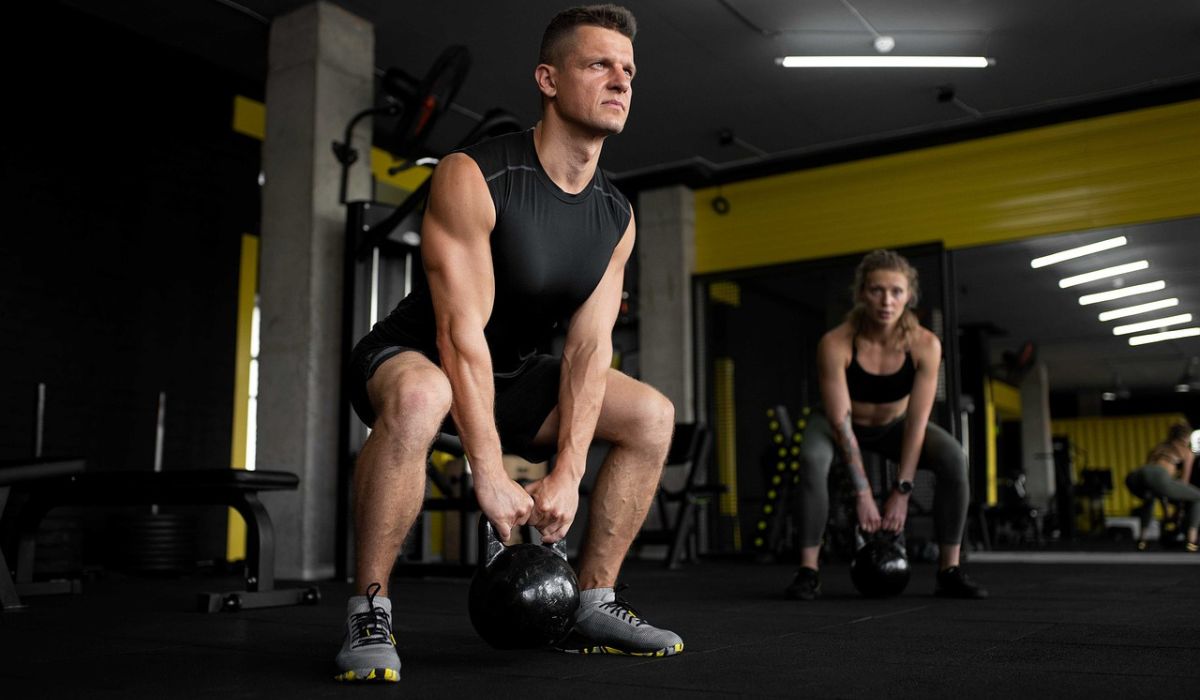Introduction
In today’s fast-paced world, maintaining mental and physical wellness can be challenging. The pressures of work, social obligations, and the digital age often leave individuals feeling overwhelmed and disconnected from their own well-being. This article delves into various aspects of mental and physical wellness, offering practical tips and insights to help you lead a healthier, more balanced life.
Understanding Mental Wellness
Mental wellness is a crucial component of overall health, encompassing emotional, psychological, and social well-being. It affects how we think, feel, and act, and it plays a significant role in how we handle stress, relate to others, and make decisions.
The Importance of Mental Wellness
Mental wellness is essential for a fulfilling life. When we are mentally healthy, we can realize our potential, cope with the normal stresses of life, work productively, and contribute to our community. Conversely, poor mental health can lead to serious issues, such as depression, anxiety, and other mental health disorders.
Factors Affecting Mental Wellness
Several factors can impact mental wellness, including:
- Biological factors: Genetics, brain chemistry, and family history of mental health problems.
- Life experiences: Trauma, abuse, and stressful life events.
- Lifestyle: Diet, exercise, sleep, and substance use.
- Social connections: Relationships with friends, family, and the community.
Strategies for Enhancing Mental Wellness
There are several strategies you can adopt to enhance your mental wellness:
Practicing Mindfulness and Meditation
Mindfulness involves being present in the moment and fully engaging with whatever you’re doing. Meditation can help you achieve mindfulness by focusing your mind and reducing stress. Regular practice of mindfulness and meditation can improve your mental clarity, emotional stability, and overall well-being.
Building Strong Relationships
Healthy relationships are vital for mental wellness. Surround yourself with supportive people who care about you. Engage in open and honest communication, and don’t hesitate to seek help from friends, family, or professionals when needed.
Managing Stress
Stress is an inevitable part of life, but chronic stress can be detrimental to your mental health. Develop healthy coping mechanisms, such as exercise, hobbies, or spending time in nature. Practice relaxation techniques like deep breathing, yoga, or tai chi.
Seeking Professional Help
If you’re struggling with mental health issues, seeking professional help is crucial. Therapists, counselors, and psychiatrists can provide support and treatment tailored to your needs. Don’t hesitate to reach out for help when you need it.
Understanding Physical Wellness
Physical wellness involves maintaining a healthy body through regular exercise, proper nutrition, and adequate rest. It also includes avoiding harmful habits, such as smoking, excessive alcohol consumption, and drug use.
The Importance of Physical Wellness
Physical wellness is fundamental to overall health. A healthy body supports a healthy mind, and vice versa. Physical activity can boost your mood, increase energy levels, and reduce the risk of chronic diseases, such as heart disease, diabetes, and obesity.
Factors Affecting Physical Wellness
Several factors influence physical wellness, including:
- Diet and nutrition: Consuming a balanced diet rich in fruits, vegetables, lean proteins, and whole grains.
- Exercise and physical activity: Engaging in regular physical activity, such as walking, running, cycling, or strength training.
- Sleep: Getting enough quality sleep to allow your body to rest and recover.
- Avoiding harmful habits: Steering clear of smoking, excessive alcohol consumption, and drug use.
Strategies for Enhancing Physical Wellness
Here are some strategies to help you maintain and enhance your physical wellness:
Eating a Balanced Diet
A balanced diet is essential for good health. Focus on consuming a variety of foods that provide the nutrients your body needs. Limit processed foods, sugary drinks, and high-fat and high-sugar snacks. Instead, opt for fresh fruits, vegetables, lean proteins, and whole grains.
Staying Active
Regular physical activity is crucial for maintaining physical wellness. Aim for at least 150 minutes of moderate-intensity aerobic activity, or 75 minutes of vigorous-intensity activity, each week. Incorporate strength training exercises at least two days a week to build and maintain muscle mass.
Prioritizing Sleep
Adequate sleep is essential for overall health. Adults should aim for 7-9 hours of sleep per night. Establish a regular sleep schedule, create a relaxing bedtime routine, and ensure your sleep environment is comfortable and free of distractions.
Avoiding Harmful Habits
Avoiding harmful habits, such as smoking and excessive alcohol consumption, is vital for physical wellness. If you struggle with substance use, seek support from healthcare professionals or support groups.
Integrating Mental and Physical Wellness
Mental and physical wellness are interconnected, and maintaining a balance between the two is key to overall well-being. Here are some ways to integrate both aspects into your daily life:
Practicing Holistic Self-Care
Holistic self-care involves taking care of your mind, body, and spirit. Engage in activities that nourish all aspects of your well-being, such as spending time in nature, practicing yoga, or engaging in creative pursuits.
Creating a Balanced Routine
Establish a daily routine that includes time for work, exercise, relaxation, and social activities. Balance is crucial to prevent burnout and ensure that you’re taking care of all aspects of your well-being.
Setting Realistic Goals
Set realistic and achievable goals for your mental and physical health. Break larger goals into smaller, manageable steps and celebrate your progress along the way.
Staying Connected
Stay connected with friends, family, and your community. Social connections are vital for both mental and physical wellness. Join clubs, groups, or activities that interest you and provide opportunities for social interaction.
Personal Stories of Wellness Journeys
Hearing personal stories of individuals who have successfully navigated their wellness journeys can be inspiring and motivating. Here are a couple of stories:
Sarah’s Journey to Mental Wellness
Sarah, a 32-year-old graphic designer, struggled with anxiety and depression for years. After seeking help from a therapist, she began practicing mindfulness and meditation. She also joined a support group and started exercising regularly. Over time, Sarah noticed significant improvements in her mental health. “It wasn’t easy, but taking small steps each day made a big difference. I’m grateful for the support I received and the progress I’ve made.”
John’s Physical Wellness Transformation
John, a 45-year-old accountant, realized he needed to make changes to his lifestyle when he was diagnosed with high blood pressure and high cholesterol. He started by making healthier food choices, incorporating more fruits and vegetables into his diet, and reducing his intake of processed foods. John also began exercising regularly, starting with daily walks and gradually increasing his activity level. “Making these changes wasn’t easy, but the benefits have been tremendous. I feel more energetic, my blood pressure is under control, and I’ve even lost some weight.”
Resources for wellness
There are numerous resources available to help you on your wellness journey. Here are some that can provide valuable support and information:
Mental Health Resources
- Therapists and Counselors: Licensed professionals who can provide therapy and counseling services.
- Support Groups: Groups where individuals with similar experiences can share and support each other.
- Mental Health Organizations: Organizations like the National Alliance on Mental Illness (NAMI) offer resources and support for mental health issues.
Physical Health Resources
- Healthcare Providers: Doctors, dietitians, and fitness trainers who can offer personalized advice and treatment plans.
- Fitness Centers and Classes: Gyms, fitness studios, and online classes that offer a variety of physical activities.
- Nutrition Resources: Registered dietitians and online resources that provide information on healthy eating.
- YOU MAY ALSO LIKE
- Exploring Ztec100 Tech Fitness: A Revolution in Wellness and Performance
Conclusion
Maintaining mental and physical wellness is a continuous journey that requires dedication and effort. By understanding the importance of both aspects of wellness and adopting strategies to enhance them, you can lead a healthier, more balanced life. Remember to seek support when needed, stay connected with others, and celebrate your progress along the way. Your well-being is worth the investment.
FAQS
1. What is mental wellness?
Mental wellness involves emotional, psychological, and social well-being. It affects how we think, feel, and act, and is crucial for handling stress and making decisions.
2. How can I improve my mental wellness?
Improving mental wellness involves practices like mindfulness, building strong relationships, managing stress, and seeking professional help when needed.
3. Why is physical wellness important?
Physical wellness is vital for overall health. It helps prevent chronic diseases, boosts mood, increases energy levels, and supports mental well-being.
4. What are some strategies for maintaining physical wellness?
Maintaining physical wellness includes eating a balanced diet, regular exercise, getting enough sleep, and avoiding harmful habits like smoking and excessive drinking.
5. How are mental and physical wellness connected?
Mental and physical wellness are interconnected. Good physical health supports mental well-being, and vice versa. Balancing both aspects is key to overall wellness.










